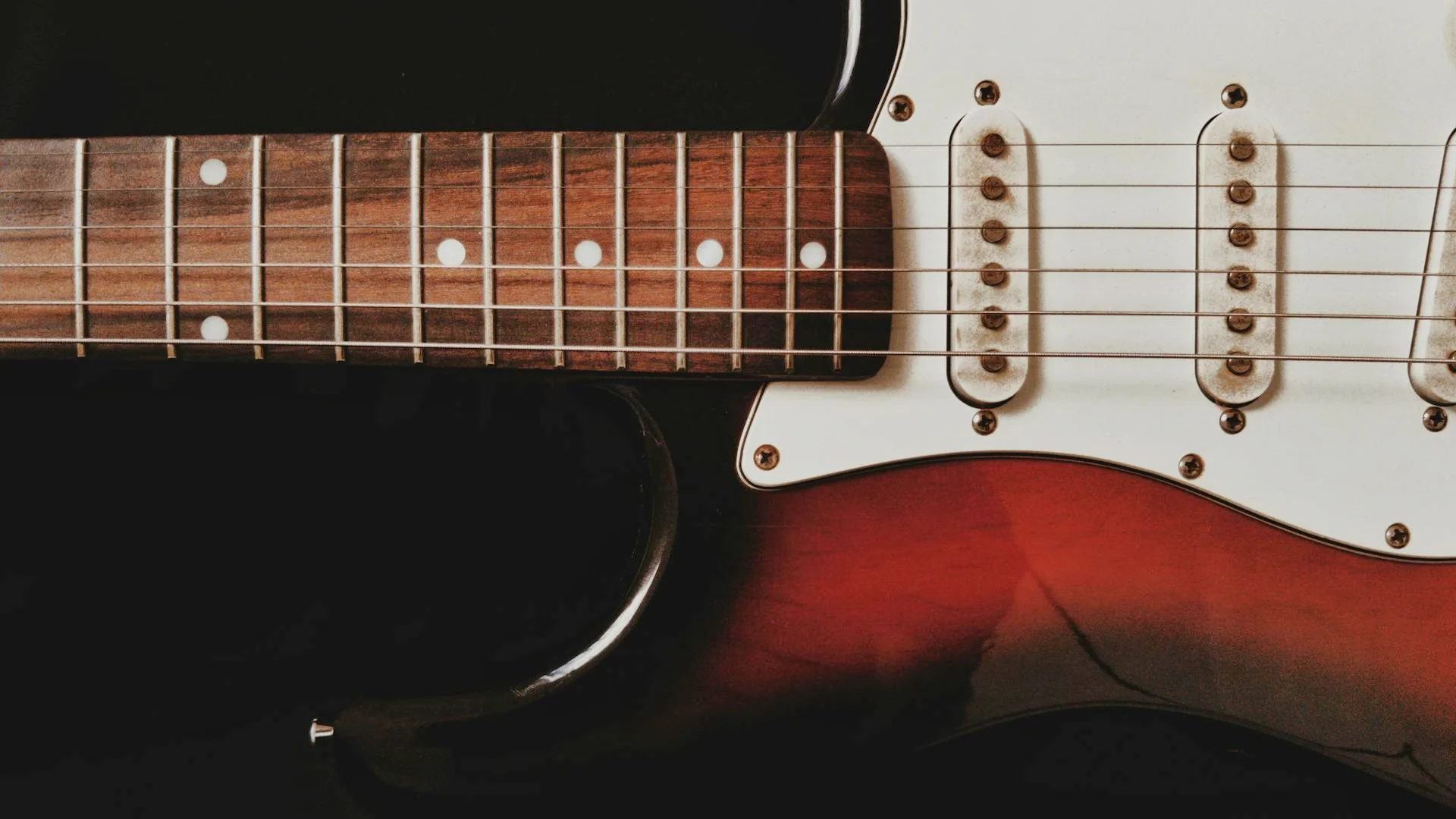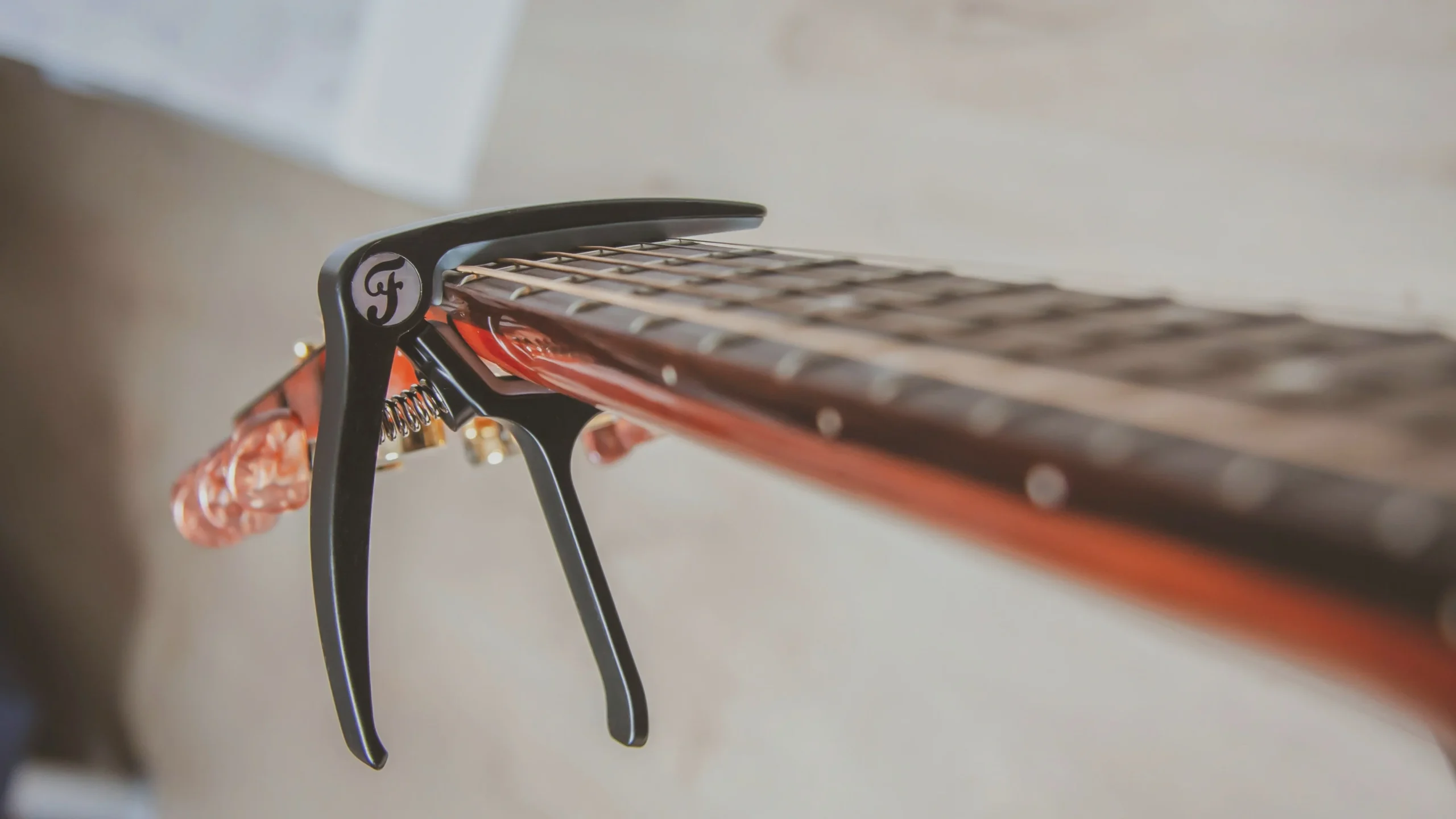
How Many Frets On An Electric Guitar?
If you’re a beginner guitarist or curious about the inner workings of an electric guitar, you may have wondered How many frets are on an electric guitar.
Frets play a crucial role in determining the pitch of your notes, so understanding their number and placement is essential.
Here, I’ll delve into electric guitar frets, exploring their purpose and discussing the standard number of frets you can expect to find on most electric guitars.
Whether you’re looking to purchase a new instrument or simply expand your knowledge, this informative guide will provide all the answers you need.
Table of Contents
What Are Guitar Frets?
The fret is the high part on the neck of your guitar. Brass and nickel metal are often used to make it.
These are made all the way along the neck of the guitar, next to the fretboard.
It changes the length of the string that vibrates to make different sounds or a specific note.
Many people think the fret is a small square box, but it’s a metal strip. The fret is the part between these two metal strips.
The part between the nut at the bottom of the guitar and the first metal strip is called the “first fret.” This will help you understand.
The part between the first and second metal strips is named the “second fret.”
That’s how you name the frets. A lot of players don’t understand it.
How do frets change the tone? We know what frets are, but what do they do?
Most people know that one fret can raise the pitch of a note by a half-step or semitone. Say you want to increase the pitch by one step.
You will need to put your finger on the second fret or the second metal strip on the neck of the guitar.
These metal strips show how the neck of a guitar is split into several parts. Each of these parts demonstrates one semitone.
Simple metal strips like these help a player get their intonation just right, even though they are mere strips. It also makes it more accessible and convenient to play chords.
The only problem with these frets is that they only let you play pitches in the fret settings key.
Since this is a “flaw,” many guitarists use the bending method to fix it. Because the string is being pulled to the side, the pitch and stress of the string go up.
How Do Frets Work?
When you press or hold down on a guitar string, it rests against the fretboard, which is what ‘fretting’ means.
This shortens the string depending on where you hold the string down on the guitar neck.
The string now moves when you strum or pluck it. That’s what makes the noise.
You can change the pitch by limiting how much the string moves when pressing a fret down.
When you fret higher up the neck (away from the body), a shorter string moves, making the pitch higher. When you fret lower down the neck, the pitch drops.
How Many Frets On An Electric Guitar
The amount of frets on an electric guitar significantly affects both its tone and how easy it is to play.
When looking at a guitar to buy or comparing two types, frets do matter.
There are three main types of electric guitars based on the number of frets they have: 21-fret guitars, 22-fret guitars, and 24-fret guitars.
Sometimes, companies that make guitars make ones with 30 or even 36 frets.
22 Fret Guitar
The most common type of electric guitar is the 22-fret guitar. These guitars are great for people who want to hear how old and famous guitars used to sound.
The pentatonic is above the octave in these forms, making it easy to see.
A guitarist will also know that the last fret will help them get from the high E to the E.
The sound that these guitars make is smooth and warm. Using these guitars to make light jazz tones and standard Strat neck pickup tones is best.
Eddie Van Halen and Joe Satriani are two musicians who like to play with a 22-fret guitar.
24 Fret Guitar
We know that 24-fret guitars aren’t good for making light jazz or standard Strat pickup tones.
A big part of the reason people choose these guitars is that they give them more room to move. But that’s not the only good thing about guitars with 24 frets.
One of the best things about playing a 24-fret guitar is where the pickups are. The neck pickup is close to the bridge because of the two extra notes.
It adds a bright, dark, and smoother touch to the output tunes.
Today, people who play rock electric guitar love this feature, so they choose 24-fret guitars.
From the bridge position to the neck position, it doesn’t make things too confusing for the player.
In terms of EQ, it’s a great choice. John Petrucci also plays the two-fret guitars to improve his show for the crowd.
21 Fret Guitar
There are 22 and 24 frets on most guitars, with 22 being the most popular. Of course.
Before the 1980s, when 24-fret guitars first came out, most had 21 frets. Taking off the pickguard on these guitars is more manageable than on 22- and 24-fret guitars.
Does The Number Of Frets On A Guitar Matter?
Yes. How a guitar sounds and how easy it is to play depends on how many frets it has.
The number of frets on a guitar determines how it sounds and how easy it is to play. Electric guitars with 22 frets sound warmer and fuller because of the way they are built.
Guitars with 22 frets have shorter necks, and the bridge and neck mics are further apart.
The tone changes as the neck pickup approaches the guitar’s nut. This creates a warmer sound.
24-fret guitars are more accessible to play because of their design. For instance, the minimum fret count on a guitar should be 24 if you want to play metal.
The higher frets will be used more when you play metal than when you play country. Then, it is better to have a guitar with 24 frets.
Adding more notes causes the neck pickup to move closer to the bridge. As the pickup gets closer to the bridge, its sound becomes brighter.
The sound is more colourful because the strings are tenser near the bridge.
There is a common misconception that people make when it comes to the fretboard length and the fret number.
Measuring from the nut to the bridge will give you the scale length. The number of frets needs to be considered.
Which Fret Should I Use?
This is one of many things that people disagree about in the world of guitars. The choice is not about quality or even price.
There is no right or wrong answer here; the choice is up to the person making it. If you press hard on the frets, you should avoid very high frets.
This is true no matter what level of skill and experience you have or the level of skill and experience the guitar is meant for.
But bigger frets will be better if you play with the same heavy hand because you wear them out faster.
Fret Material
When we talk about frets, unlike other sections of the guitar, we usually talk about the size and not the quality of the material.
The material of the frets might serve a purpose other than aesthetics.
Nickel Silver Frets
Most guitars have ‘Nickel Silver’ frets (also called German Silver), which contain no silver.
The substance is an alloy of Nickel, copper, and zinc. The Nickel lends the fret strength and longevity, while the copper adds softness and flexibility.
Depending on the manufacturer, the percentage of nickel will be roughly 18%, 60-62% for copper, and 20% for zinc. The silvery appearance is owed to the nickel.
Brass Frets
If you don’t add the Nickel, the color will be more yellow, and the frets will be lighter. These aren’t as hard as nickel-alloyed ones, so they will wear out faster.
Older instruments are more likely to have brass frets, and some makers, like Warwick, are still happy to use them.
Stainless Steel Frets
While not very popular on mass-produced guitars, stainless frets are still the toughest. Custom guitar builders are becoming more and more fans of them.
You might never need a fret job, and if you keep them clean, they might last forever. It will also be easy to bend because it is smooth.
Everything is fine for the player, but it’s harder to work with for the guitar maker, who will either need better tools or find that the ones they have aren’t up to par.
The sound is also a problem. Some say they can hear it making a louder sound, like ringing or “pinging.”
You should really test your own ears and see what you hear or feel about it. Other people either can’t tell the difference or don’t mind.
Final Words
When it comes to the number of frets on an electric guitar, there is no one-size-fits-all answer.
Most electric guitars’ standard number of frets is 22, but some guitars may have 21 or even 24 frets.
The number of frets can affect the range and playability of the guitar, so it’s essential to consider your playing style and musical preferences when choosing a guitar with the right number of frets.
Whether you’re a beginner or an experienced guitarist, finding the right number of frets that suit your needs will ultimately enhance your playing experience and allow you to explore a broader range of musical possibilities


